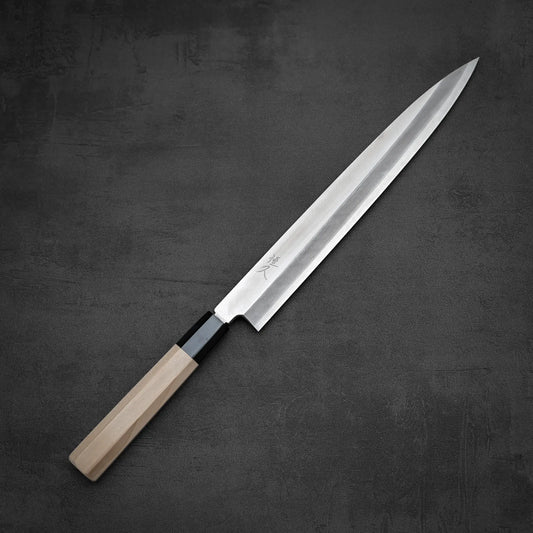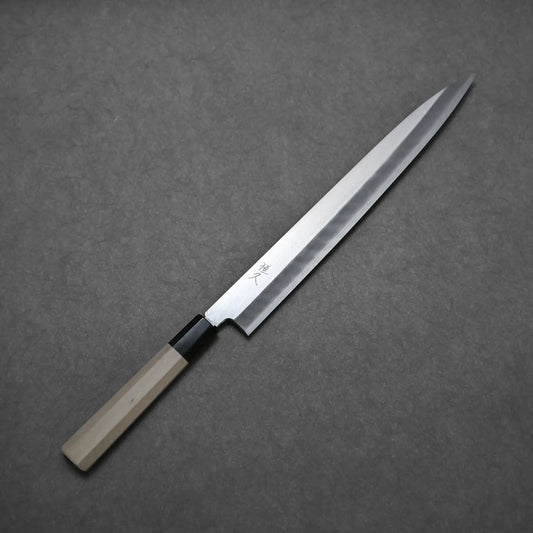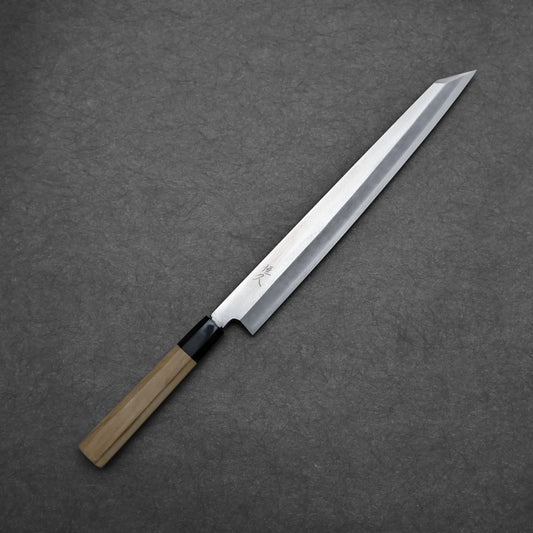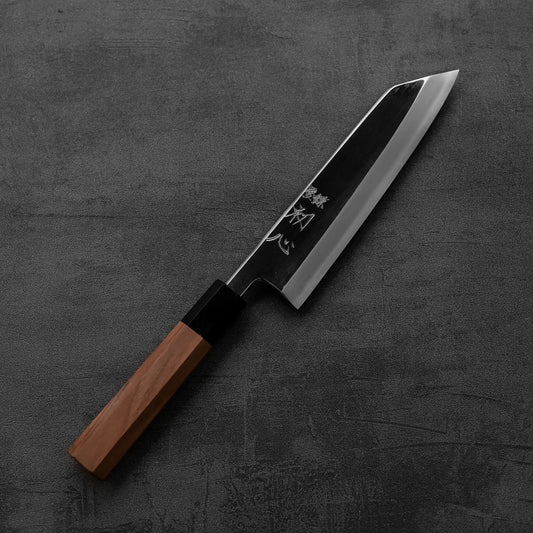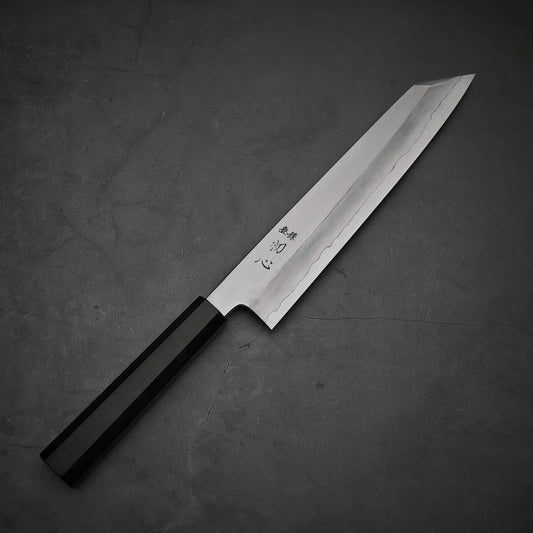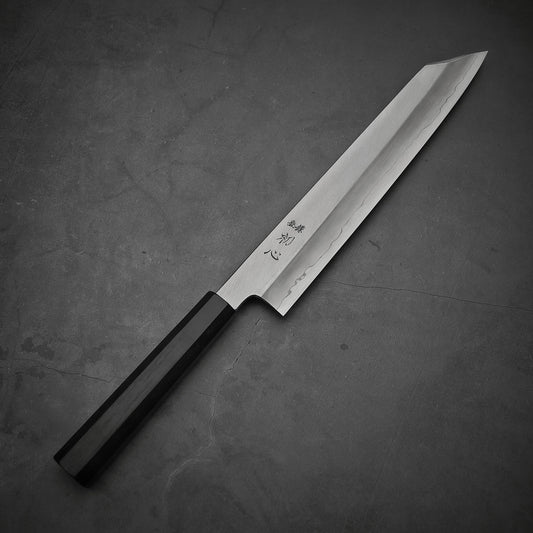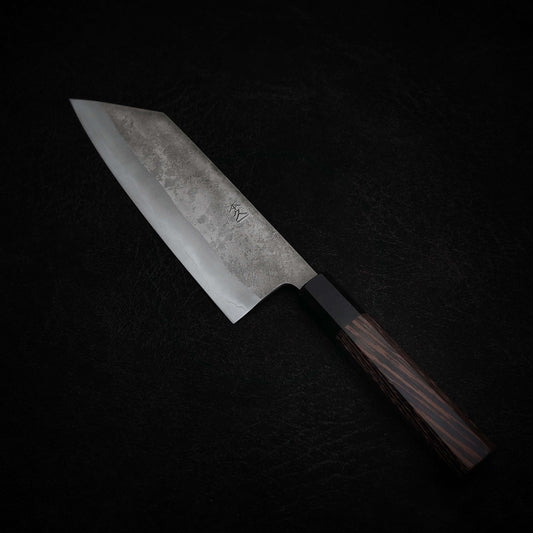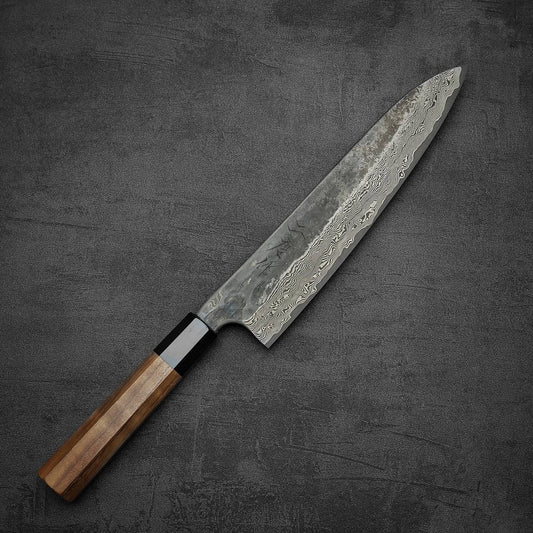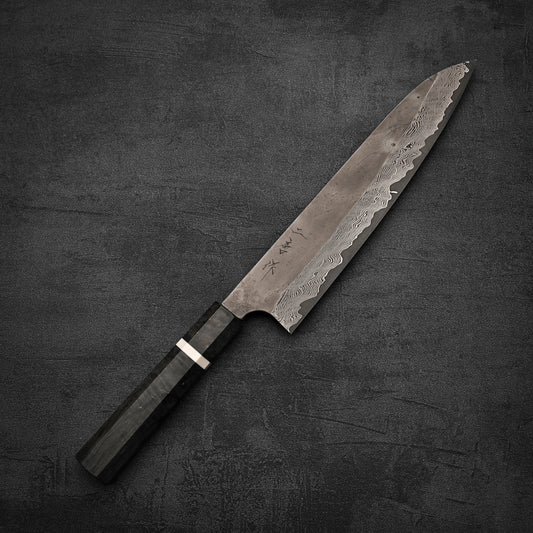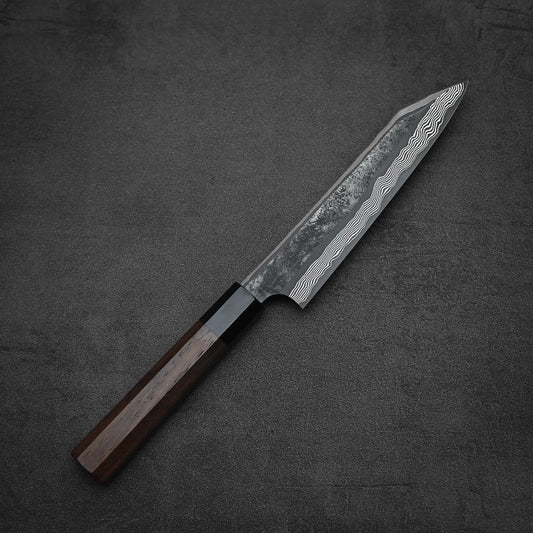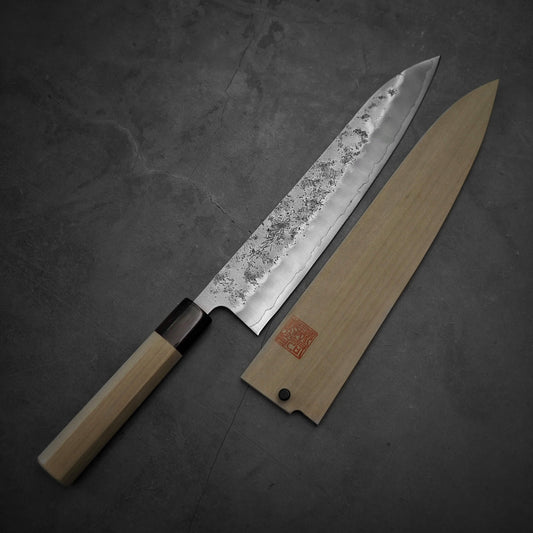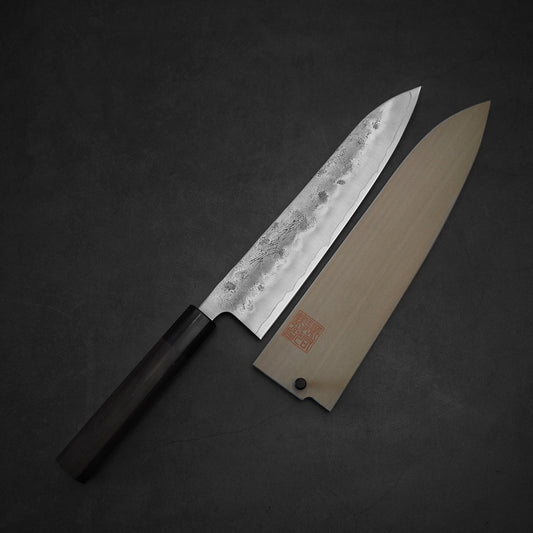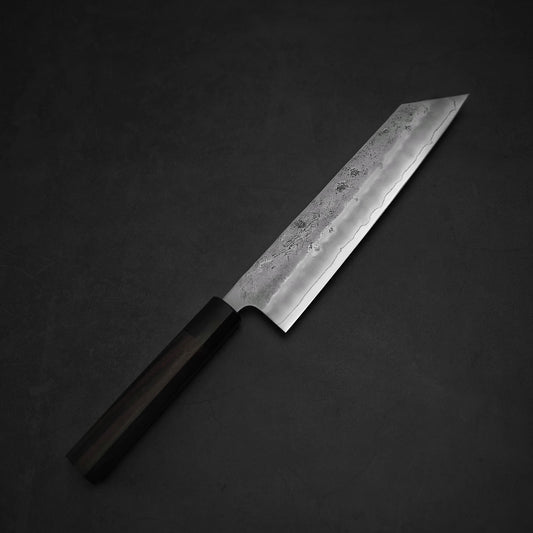Collection: Hitachi Silver#3 (Ginsan)
Hitachi Silver #3 (Ginsan) steel is a popular Japanese stainless steel used in kitchen knives. Known for its ease of sharpening, Ginsan offers a balance of properties similar to carbon steel but with the added benefit of corrosion resistance. Its composition includes 0.95-1.10% Carbon (C), 13.00-14.50% Chromium (Cr), 0.60-1.00% Manganese (Mn), 0.35% Silicon (Si), 0.03% Phosphorus (P), and 0.02% Sulfur (S).
(Note: All knife steels contain carbon, which is primarily responsible for hardness and edge retention. However, higher carbon content alone can reduce toughness. A steel becomes 'stainless' when it has at least 13% chromium content.)
When comparing Ginsan to other popular stainless steels, VG-10, developed by Takefu Special Steel Co., has a similar carbon content (0.95-1.05%) and slightly higher chromium content (14.50-15.50%). It also includes cobalt, vanadium, and molybdenum. VG-10 and Ginsan have comparable edge retention, with minimal differences between the two. SG2, another steel from Takefu, is a powdered metallurgy steel with a higher carbon content (1.25-1.45%) and higher levels of vanadium and molybdenum. This composition gives SG2 better wear resistance and edge retention compared to Ginsan.
Ginsan steel is ideal for those who prioritize ease of sharpening and maintenance while still wanting the benefits of stainless steel. It is commonly used in a range of kitchen knives, offering reliable performance.
Reminder: When selecting a knife steel for your Japanese kitchen knife, it's essential to understand that there are trade-offs involved. Improving one characteristic, such as edge retention, often means compromising on another, like toughness. There is no universally "best" steel; the choice depends entirely on your individual needs and preferences. Remember, steel is just one piece of the puzzle. Consider other aspects that matter to you such as the grind, aesthetics, and overall craftsmanship. While steel matters, it's not the only thing that makes a great knife.
 Sold out
Sold out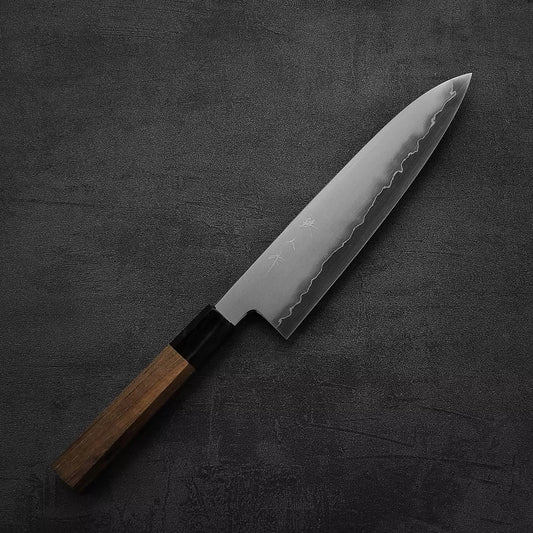 Sold out
Sold out Sold out New
Sold out New
